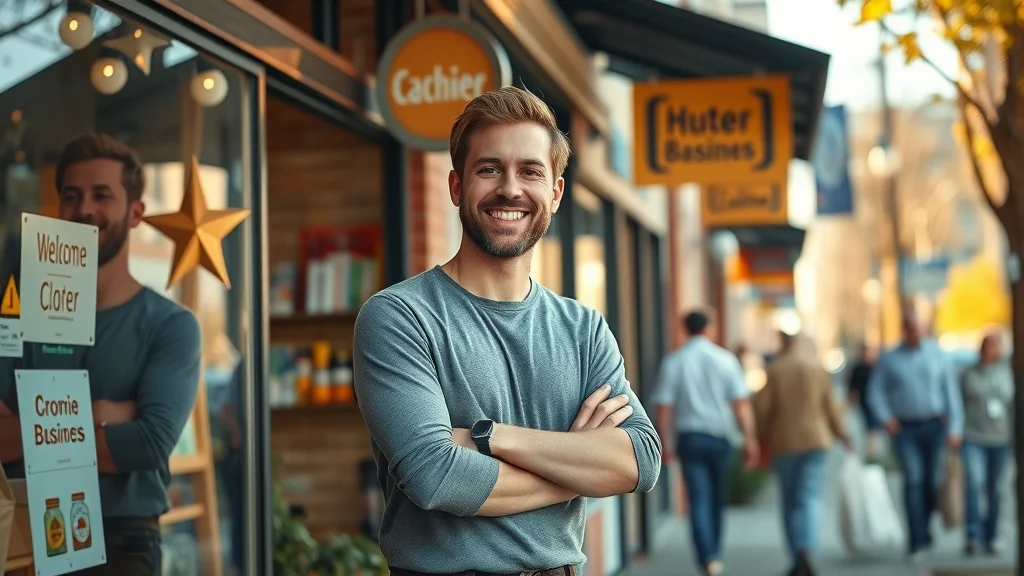Did you know that companies with effective lead nurturing techniques produce 50% more sales-ready leads at 33% lower cost? In today’s fiercely competitive digital marketplace, simply generating new leads isn’t enough—what sets successful businesses apart is how they nurture relationships, convert interest, and inspire genuine loyalty. This guide unlocks the secrets behind nurturing tactics that forge connections and consistently transform prospects into devoted customers. Ready to supercharge your sales funnel, outpace your competitors, and boost your conversion rates? Dive in to explore advanced strategies, practical case studies, and the next era of lead nurturing innovation.
Unlocking Growth: Why Lead Nurturing Techniques Are Your Greatest Asset
In the world of modern sales, lead nurturing techniques are the hidden engine behind explosive growth. Unlike traditional marketing, which often focuses solely on lead generation, nurturing tactics have evolved to deepen engagement at every sales funnel stage. By consistently providing valuable touchpoints tailored to your target audience , companies nurture leads along the buying journey—resulting in higher conversion rates and lower acquisition costs. According to Forrester Research, “Companies that excel at lead nurturing generate 50% more sales-ready leads at a 33% lower cost.” This makes nurturing not just a nice-to-have, but an essential asset for businesses serious about sustainable success.
"Companies that excel at lead nurturing generate 50% more sales-ready leads at a 33% lower cost." – Forrester Research

Most organizations discover that aligning their nurturing strategy with the sales cycle accelerates results. By addressing different decision-making stages with precise messaging and content, you keep prospective customers engaged and moving forward. With the right strategies, you’ll see more effective lead nurturing convert prospects into brand advocates and repeat buyers . Let’s explore these game-changing tactics in detail.
Mastering Effective Lead Nurturing: The Core Principles Redefining Modern Sales
- The fundamentals of lead nurturing techniques
- How to craft nurturing campaigns for every sales funnel stage
- Tips for increasing conversion rates with effective lead nurturing
- The latest nurturing strategies that top marketers deploy
- Case studies and real-world examples of successful lead nurturing tactics
To nurture leads effectively, you’ll need to master essential principles—relevance, timing, personalization, and multichannel integration. Today’s buyers expect tailored experiences, so social media campaigns, personalized content offers, and event-triggered emails all play pivotal roles in maintaining interest and building trust. By leveraging data to understand where your leads are in the sales funnel , you can deliver the right information at precisely the right moment, increasing the chances of conversion dramatically. Whether you’re new to nurturing or looking to refine your approach, these principles will serve as your foundation for growth.
Understanding Lead Nurturing Techniques and Their Impact on Conversion Rates
Lead nurturing techniques bridge the gap between an initial inquiry and a loyal customer, making them integral to any sales process . Without a deliberate nurturing plan, even the most promising leads can slip away, especially if they’re not sales-ready yet. Research consistently shows that companies with systematic nurturing strategies enjoy significantly higher conversion rates compared to those who rely on ad-hoc or generic approaches. These tactics ensure every interaction is purposeful, guiding your potential customers through their journey rather than overwhelming them with irrelevant content or premature sales pitches.
One of the greatest advantages of nurturing is the ability to segment audiences based on their unique interests, behaviors, and position in the sales funnel . Personalization transforms one-size-fits-all messages into meaningful dialogues—improving engagement, establishing trust, and earning your brand a reputation for attentiveness. Let’s look at how these strategies manifest at each sales stage.
The Role of Lead Nurturing in the Sales Funnel
The sales funnel is the backbone of effective sales and marketing teams. At the top, you attract leads through content, social media, and lead generation assets. But only a small portion of these leads are ready to buy immediately. Lead nurturing techniques —such as targeted drip campaigns, timely follow-ups, and ongoing education—keep your brand top-of-mind during the evaluation phase, warming cold leads into ready buyers. By addressing their pain points at each stage, you foster a sense of care and credibility. This approach seamlessly guides them to the decision point, increasing the likelihood of a positive conversion.

Let’s not forget the after-sale phase. Leads need nurturing even once they’ve bought, as retention and loyalty are just as crucial as conversion. Consistent value delivery post-purchase increases repeat business and cultivates brand advocates. In short, effective lead nurturing tactics influence every level of the funnel—from awareness to advocacy.
Effective Lead Nurturing Strategies to Increase Conversion Rate
Deploying the right lead nurturing strategy means evaluating which tactics best align with your audience’s preferences and your business objectives. Personalized email drips, content offers, and social media touchpoints deliver immense value by reaching prospects across multiple channels. The result? Higher engagement, deeper trust, and better sales performance. Leading companies track conversion rates to assess which nurturing strategies actually move the needle, allowing for agile tweaks and ongoing optimization.
Modern marketers use a blend of technology and creativity to scale their nurturing campaigns. Retargeting ads remind visitors of your product or service even after they leave your website, while event-based triggers help direct the right content at the exact moment of peak interest. Below, compare the impact of common lead nurturing tactics:
| Lead Nurturing Tactic | Strengths | Ideal Stage in Sales Funnel | Conversion Rate Impact |
|---|---|---|---|
| Personalized Emails | High relevance, scalable, trackable | Middle/Bottom of Funnel | High |
| Content Drip Campaigns | Educates, builds trust over time | Top/Middle of Funnel | Moderate |
| Event-Based Triggers | Real-time, highly contextual | All Stages | Significant |
| Retargeting Ads | Re-engages lost leads, widespread reach | Top/Middle of Funnel | Moderate to High |
Designing a High-Impact Lead Nurturing Campaign
Every lead nurturing campaign should be intentionally designed to move prospects through the sales cycle efficiently. This requires diligent mapping, persona research, prioritization, and frequent optimization. Campaigns that incorporate automation, personalization, and strong analytics not only streamline operations but also generate better outcomes.
A high-impact nurturing campaign adapts to the diverse needs of your leads—whether they’re information seekers, price shoppers, or decision-ready buyers. It aligns messaging and content format with both buyer intent and timing. The following sections break down the process for mapping, targeting, and prioritizing your nurturing efforts .
Mapping the Lead Nurturing Process to the Sales Cycle
To ensure your nurturing tactics meet customers where they are, it’s crucial to map the lead nurturing process to the sales cycle . Start by outlining each stage of the buyer’s journey—from awareness and consideration to decision and advocacy. Then, match specific content and messaging with the particular needs and objections typical at every stage.

For example, early-stage leads might receive educational blog posts or webinars, while decision-stage prospects benefit from comparison guides and customer testimonials. By regularly evaluating performance at each step, you will quickly identify bottlenecks and opportunities for improvement, allowing for maximum sales and marketing alignment.
Creating Buyer Personas for Targeted Lead Nurturing
Constructing clear buyer personas is the cornerstone of targeted lead nurturing. By identifying the demographics, behaviors, challenges, and motivations of your ideal customers, you can tailor content and outreach efforts to what matters most. Personalized campaigns not only increase engagement but also boost conversion rates by making every interaction feel relevant and valuable.

Key nurturing tactics for each buyer persona include:
- Automated Email Sequences
- Social Media Engagement Campaigns
- Valuable Content Offers
- Retargeting and Remarketing
Leveraging Lead Scoring to Prioritize Nurturing Efforts
Lead scoring helps prioritize your nurturing efforts by assigning value to leads based on their behavior, interaction, and fit. Leads that download resources, interact with emails, or spend time on key landing pages are given higher scores. This process creates a seamless handoff between marketing and sales, as sales teams can focus on leads most likely to convert, while automated nurturing continues for those not yet ready to buy.
By continually refining your lead scoring model, you ensure that your nurturing strategies adapt to changing behaviors and market trends. Modern marketing automation platforms can also update scores in real time, maximizing the efficacy of every nurturing campaign you deploy.
Crafting Lead Nurturing Sequences That Build Loyalty and Drive Results
Exceptional lead nurturing goes beyond simple follow-ups—it’s about constructing sequences that build trust and inspire action. These sequences use a mix of formats—emails, social posts, webinars, and more—to deliver consistent value and position your product or service as the clear solution.
The most effective lead nurturing sequences aren’t static; they’re tailored to changing buyer needs and feedback throughout the sales process. Let’s dive into proven sequence templates, the magic of personalization, and the benefits of integrating social media touchpoints.
Lead Nurturing Sequence Templates: Proven Steps for Every Stage

Effective lead nurturing starts with clear, actionable sequence templates tailored for each stage of the buyer’s journey. Start with a welcome or educational email, followed by targeted insights such as case studies or use cases. As trust builds, offer product comparisons or invitations to events/webinars. The final steps should focus on special offers, direct consultations, or exclusive content, nudging the prospect towards decision while maintaining a supportive, informative rapport.
High-performing organizations revisit and refine these templates regularly, relying on data from prior campaigns and feedback from the sales team. This iterative approach ensures your nurturing campaigns remain relevant, useful, and conversion-focused every time.
Personalization Techniques in Effective Lead Nurturing
Personalization is the oxygen of modern lead nurturing tactics. Using behaviors like browsing history, downloaded resources, or event attendance, you can tailor follow-up messages, content, and offers to each prospect’s exact interests. Subject line personalization in emails, personalized videos, and dynamic web content are just a few advanced strategies to elevate the user experience and improve your nurturing process.
Companies using advanced personalization in their nurturing campaigns report significantly higher engagement rates, shorter sales cycles, and long-term loyalty. Delivering individualized experiences at scale may demand marketing automation, but the improved ROI makes it a core pillar of every winning nurturing strategy.
Integrating Social Media Into Your Lead Nurturing Campaign
Social media isn’t just for brand awareness—it’s a powerful tool for nurturing leads through rich engagement, real-time conversations, and timely support. Use LinkedIn, Twitter, Facebook, and Instagram to share valuable content, respond to queries, and encourage participation in online events. Automated messaging bots and retargeting ads can also keep your brand present wherever your leads spend their digital time.
When integrating social channels, it’s essential to maintain a consistent brand voice and ensure all touchpoints reinforce your overarching nurturing strategy. This multichannel approach keeps you connected with prospects across the customer journey, increasing the odds of ultimately delighting and converting them.
| Stage | Touchpoint 1 | Touchpoint 2 | Touchpoint 3 |
|---|---|---|---|
| Awareness | Welcome Email | Educational Blog Post | Social Media Engagement |
| Consideration | Product Comparison Guide | Customer Testimonial | Webinar Invitation |
| Decision | Special Offer Email | Personalized Demo | Follow-Up from Sales Rep |
Optimizing Lead Nurturing Efforts With Automation and Multichannel Tactics

The smartest sales and marketing teams use automation and multichannel strategies to amplify their lead nurturing tactics . Automation tools like workflow builders, CRM integrations, and behavioral triggers ensure every prospect receives timely, relevant touchpoints—no matter where they are in the funnel. Multichannel nurturing leverages a blend of emails, SMS, social media , phone calls, and live chat, meeting your leads on their preferred platforms.
Efficient automation frees your team to focus on high-impact relationships, while broadening your campaign’s reach and consistency. The right mix of channels increases engagement and provides multiple paths for prospects to convert, all while collecting valuable insights for future optimization.
Automation Tools for Streamlined Nurturing Campaigns
Modern marketing automation platforms like HubSpot, Marketo, and ActiveCampaign make it easy to set up advanced nurturing sequences. These tools enable tracking of user behaviors, dynamic content personalization, real-time lead scoring, and automated handoff between sales and marketing. Seamless integration ensures you nurture leads efficiently without losing the human touch.
By investing in automation, brands can deliver highly relevant content at scale, track key performance metrics, and optimize nurturing tactics based on what actually generates conversions.
Multichannel Lead Nurturing: Combining Email, Social Media, and More
Effective lead nurturing campaigns thrive on diversity. Email remains a powerhouse, but combining it with intelligent chatbots, social ads, retargeting, mobile messaging, and even direct mail paints a unified, omnichannel experience. Consistency across platforms is critical—your target audience should encounter a cohesive message whether reading an email or browsing Instagram.
- Email Automation Tool
- CRM (Customer Relationship Management) Platform
- Lead Scoring Software
- Social Media Management Suite
- Behavioral Analytics Tools
- Survey and Feedback System
- Ad Retargeting Platform
These essential tools empower your team to run sophisticated, multichannel nurturing campaigns that maximize ROI.
Analyzing and Improving Lead Nurturing Performance Metrics

Continuous improvement is the essence of high-performance lead nurturing techniques . Regularly monitor key metrics such as open rates, click-through rates, conversion rates, and lifecycle stage progression to identify what’s working and what needs attention. Leading teams use A/B testing, cohort analysis, and attribution tracking to optimize tactics and boost results.
Real-time analytics also help uncover underperforming touchpoints, guiding you to refine messaging, adjust frequency, or try new channels. A data-driven approach ensures your nurturing efforts keep up with shifting buyer behaviors and market trends, sustaining success both short- and long-term.
"Lead nurturing is not a linear process—top marketers experiment across channels and stages for maximum results." – HubSpot
Case Studies: Lead Nurturing Tactics That Convert Prospects Into Loyal Customers
Case Study 1: Personalized Nurturing Campaigns in SaaS

A rapidly growing SaaS company struggled with low trial-to-paid conversion rates. By segmenting leads by buyer persona and creating tailored email sequences, they addressed unique pain points for each segment, offered persona-specific content, and monitored engagement with a robust lead scoring system. Within six months, they increased conversion rates by 30%, showing the direct impact of targeted nurturing upon the sales funnel.
Crucially, the combination of automated follow-ups, personalized onboarding journeys, and feedback surveys fostered higher engagement, increased upsell rates, and reduced churn—turning one-time buyers into long-term advocates.
Case Study 2: Multichannel Nurturing Strategy in E-commerce
An e-commerce retailer implemented a multichannel nurturing campaign involving automated email reminders, retargeting ads, and SMS offers. Each channel reinforced a consistent message, while the company’s CRM dynamically updated product recommendations based on browsing behavior. This kept the brand at the top of buyers’ minds at every stage, recovering lost carts and driving a 25% lift in repeat purchases.
Their biggest breakthrough came from synchronizing social campaigns with email flows—customers who engaged on social were almost twice as likely to respond to email offers, showing the value of an integrated, customer-centric nurturing strategy.
Industry Insights: Effective Lead Nurturing Across Different Business Sectors
While lead nurturing is critical for technology and online retail, its effectiveness spans financial services, healthcare, manufacturing, and more. B2B industries benefit from longer, education-rich nurturing sequences, while B2C brands see success with automated reminders, limited-time offers, and loyalty programs. For both, continuous communication, multichannel alignment, and data-informed personalization remain top priorities.
Industry-leading brands set themselves apart by embedding nurturing tactics into every touchpoint, ensuring leads feel understood, valued, and supported—no matter their sector or journey stage.
Common Pitfalls in Lead Nurturing Campaigns and How to Avoid Them
Overcoming Weak Lead Segmentation in Your Nurturing Process
Failing to segment leads effectively can make even the most polished nurturing campaigns irrelevant. Relying on basic demographics alone often leads to generic messaging, low engagement, and poor conversion. Instead, leverage behavioral data (downloads, onsite behavior, engagement) and psychographics (motivations, challenges) to create meaningful audience clusters. This nuanced segmentation drives personalized messaging and higher campaign success.
It’s essential to regularly review and update segmentation criteria based on new insights and changing customer needs, guaranteeing your nurtured leads always receive the most relevant content and offers.
Mistakes to Avoid in Lead Nurturing Tactics
Several common mistakes can derail your lead nurturing efforts before they reach full potential. Avoid over-automation which can strip away the human touch. Steer clear of generic messaging; personalize wherever possible to address each prospect’s context and journey stage. Ensure follow-ups are consistent, as sporadic outreach lets even sales-ready leads slip through the cracks. Lastly, poor timing—too frequent or too late—can turn interest into annoyance or apathy.
- Over-automation
- Generic Messaging
- Inconsistent Follow-ups
- Poor Timing
Careful planning, robust data analysis, and a customer-centric mindset are the antidotes to these pitfalls.
People Also Ask: Lead Nurturing Techniques

What are lead nurturing strategies?
Lead nurturing strategies are structured, long-term plans for building relationships with potential customers at each stage of the sales funnel. These strategies often combine personalized emails, targeted content, social media interactions, and timely follow-ups to educate, engage, and advance leads toward a purchase. Effective lead nurturing strategies use segmentation, scoring, and automation to deliver the right message at the right time, dramatically increasing conversion rates and customer loyalty.
What is an example of lead nurturing?
An example of lead nurturing is sending a new lead a personalized welcome email, followed by educational resources that match their expressed interests. Over time, you might invite them to a relevant webinar and follow up with a case study demonstrating your product’s effectiveness. This step-by-step process, tailored to the individual’s needs and behavior, keeps your brand top-of-mind and gently guides them toward becoming a customer.
What is an example of a lead nurturing sequence?
A standard lead nurturing sequence could look like this: First, a prospect receives a welcome email after downloading an ebook. Next, a drip campaign delivers educational tips over the next two weeks, followed by an invitation to a live demo or consultation. If the lead attends, a sales rep follows up with a special offer; if not, additional value-driven emails continue until they’re ready to engage further.
Which of the following is a common method for nurturing leads?
One common method for nurturing leads is regular email drip campaigns. These automated email sequences deliver targeted information and offers at each stage of the buying process, educating prospects and building trust without overwhelming them. Other popular methods include retargeting ads, social media engagement, and personalized follow-up calls from the sales team.
Essential Lead Nurturing Strategies and Future Trends to Watch
AI-Driven Nurturing Tactics: The Next Era

Artificial intelligence is set to revolutionize lead nurturing for good. AI-driven nurturing tactics can automatically score, segment, and route leads for hyper-personalization. Advanced systems analyze digital footprints to predict next-best actions and deliver dynamic content based on real-time behaviors. Expect chatbots, predictive analytics, and AI-powered recommendation engines to become standard tools for tomorrow’s sales and marketing teams.
The Evolving Role of Personalization in Lead Nurturing
Personalization continues to evolve as a vital force in lead nurturing. Beyond name or company tokens, savvy marketers now leverage predictive analytics and multi-touch data to customize journey paths, content relevance, and timing. As algorithms improve, personalization will reach new heights—delivering individualized experiences that drive loyalty and maximize conversion.
Predictive Analytics in the Lead Nurturing Process
Predictive analytics is transforming how organizations nurture leads . By analyzing patterns in prospect behavior, it forecasts who is most likely to convert, when to engage, and which channels are most effective for follow-up. This data-driven accuracy allows teams to focus nurturing efforts where they matter most, reducing wasted resources and accelerating sales cycle velocity.
| Aspect | Traditional Techniques | AI-Enhanced Methods |
|---|---|---|
| Segmentation | Manual, rule-based | Automated, data-driven |
| Personalization | Basic (e.g., name, company) | Advanced (behavior-based, real-time) |
| Scalability | Limited by team bandwidth | Virtually unlimited via automation |
| Optimization | Periodic, retrospective | Continuous, predictive |
Frequently Asked Questions About Lead Nurturing Techniques
- How long should a lead nurturing campaign last? A lead nurturing campaign should last as long as it takes for a lead to move through the sales funnel—from initial interest to ready-to-buy. This can vary widely, from weeks in B2C to months (or longer) in B2B. Continual engagement and regular value delivery are key, even after the initial sale.
- What KPIs define lead nurturing success? Key performance indicators for successful lead nurturing include conversion rate, email open/click rates, progression through funnel stages, sales velocity, customer lifetime value, and retention rate. Regularly measure and adjust based on these metrics to optimize results.
- Can lead nurturing tactics work for B2C as well as B2B? Absolutely. While B2B cycles are typically longer and involve more education, B2C companies also benefit from timely, personalized engagements—think cart reminders, loyalty offers, and product recommendations. The principles of nurturing apply across both sectors, with tactics tailored to audience needs.
Summary: Key Takeaways for Executing High-Performance Lead Nurturing Tactics
- Precise segmentation is crucial
- Multi-channel nurturing maximizes engagement
- Personalization makes lead nurturing more effective
- Consistent analysis ensures ongoing success
Ready to Transform Your Sales Process With Proven Lead Nurturing Techniques?
Get started now: Map your funnel stages, upgrade segmentation, embrace automation, and personalize every touchpoint. The right lead nurturing techniques will elevate your sales process and make lasting loyalty your competitive edge.
Sources
- Forrester Research – https://www.forrester.com
- HubSpot – https://www.hubspot.com
- Marketo Blog – https://blog.marketo.com
- Salesforce – https://www.salesforce.com
- Content Marketing Institute – https://contentmarketinginstitute.com
To enhance your understanding of effective lead nurturing techniques, consider exploring the following resources:
-
“7 Amazingly Effective Lead Nurturing Tactics” ( blog.hubspot.com )
-
“14 Lead Nurturing Strategies for Your Business Growth” ( geekflare.com )
These articles provide comprehensive insights into various lead nurturing strategies, including personalized email campaigns, multi-channel approaches, and the importance of timely follow-ups. If you’re serious about optimizing your lead nurturing process, these resources will offer valuable guidance and actionable tactics.
 Add Row
Add Row  Add
Add 










Write A Comment